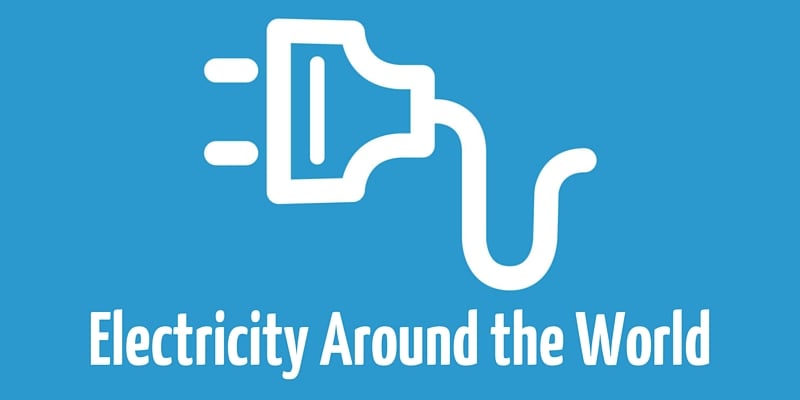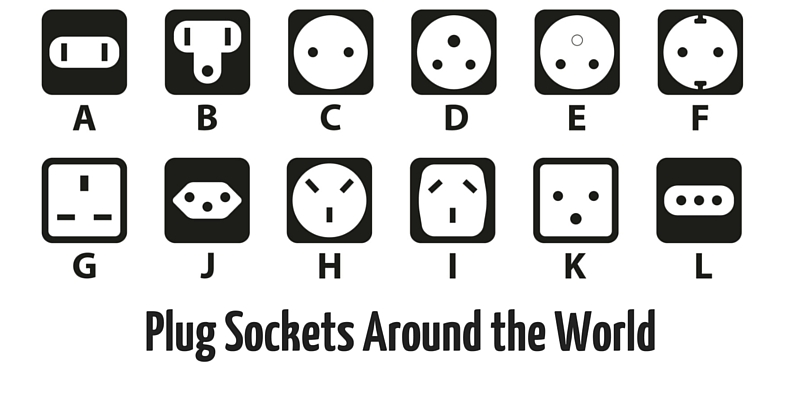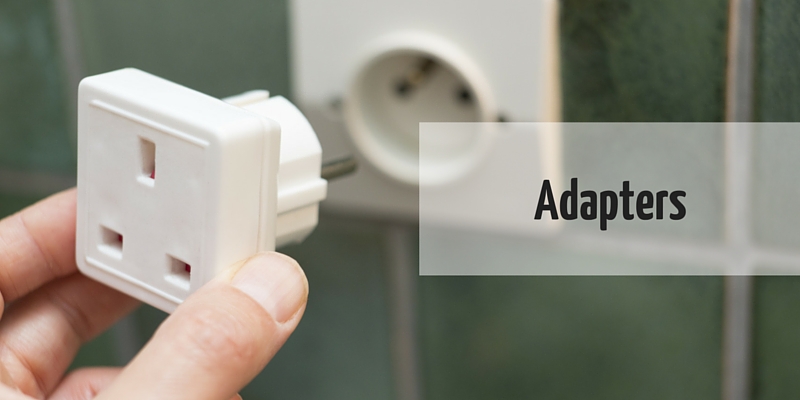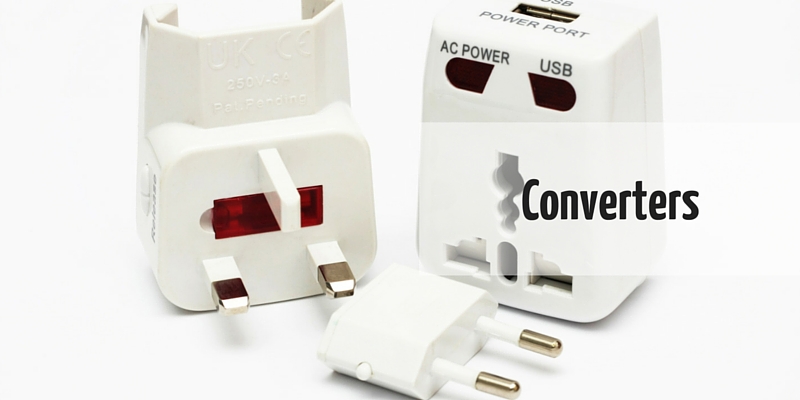Electricity Around the World: Plug Adapter Guide
Knowledge is power.

Visiting another country soon and need the run-down on electricity around the world? Our comprehensive plug adapter guide will help to ensure you've 'got the power' wherever it is in the world you're heading. From converters to transformers, we'll help you navigate this tricky but important subject that even the most seasoned travellers will admit to being baffled by.
What travel adapter do I need?

The chart above shows a range of possible configurations for electrical wall socket you might encounter when travelling the world. Recognise many? Among the more familiar are 'G': the UK's standard three-slot socket, 'C', which is commonplace in most of the rest of Europe, and 'A' and 'B', both of which are standard in the US. You'll also note however, that there's an array of others, and if you want to complete the set, it helps to have a working knowledge of the science of travel adapters.
What is an adapter?

You've almost certainly used one in the past, but do you actually know what is meant by the term 'adapter'?
Despite what you might think, the device you buy in the supermarket or pharmacy before you travel won't convert the voltage that your appliances receive: it will usually just change the shape of your UK plugs, allowing them to slot in to foreign wall sockets. Usually this is not a problem, and it's now possible to buy an adaptor that works in almost any country. But in some cases you may need extra kit to ensure you are prepared for electricity around the world.
If a higher or lower voltage is required, you'll additionally need a converter or transformer, so you may need to equip yourself with one of these gadgets, too. The need for this will depend on where you going, and the type of appliances you want to plug in.
When do you need a converter?

The amount of power supplied by a wall socket may differ from one country to the next. Here in the UK and in most other parts of the world, wall sockets provide 220/240V of electricity, whereas in some other countries including North America, it's 110/125V. This is also why you may have seen that some hotel chains have different voltage circuits to allow travellers from all over the world to plug in safely.
The good news is that appliances are increasingly being designed with our globe-trotting habits in mind, and are capable of receiving anything between 100 and 240 Volts: this is known as 'multi-voltage'. Cameras, smartphones and laptops are usually multi-voltage.
However, some UK appliances are still only designed to receive 220/240V of power, so if you're visiting one of those areas that has a lower voltage and you're carrying these single voltage items with you, you'll need a device that converts as well as adapts. This limitation is becoming rare for portable devices, however: it usually applies to washing machines and other large appliances.
To confuse matters further, certain appliances have even more eccentric power needs, and must be approached with care. The classic example is a hairdryer, as older models sometimes feature a switch to change between two voltages: these are called 'dual voltage': these differ from multi-voltage items in that they do not 'sense' how much power is coming in, so you have to manually tell them by flipping the switch.
However, we generally recommend you don't travel with a hairdryer - particularly when staying in a well-equipped hotel.
How do I know the voltage?

You understand what's needed, but how do you know what to look for? First, you'll need to find the label on the appliance you want to use. Power labels are commonly located:
- on the plug
- on a label attached to the cable
- underneath the appliance on a label or etched
Next, look for any information on 'input'. Multi-voltage items will show a range: e.g. '110v-240v'; single voltage appliances will have only one, e.g. '240v'. If it's the latter, you'll have to purchase some extra kit in the form of a converter and/or transformer. We suggest you visit a reputable electrical specialist to find out what sort you'll need, but there are some great pointers here on what to look for.
What about portable power?

Finally, a useful piece of kit to carry with you whenever you're travelling is a portable power bank. These do ultimately have to be charged from the mains (or via USB by other appliances that store electricity such as your laptop), but they can give you that much-needed bit of juice when you most need it - for example on a flight, or when you've checked out a your hotel and don't have any access to a socket. The Mini Mophie Powerstation (£29.99) is one such device, the Anker Astro (£15.99) is another that will keep you and your smartphone ticking over until the next pit stop.
If you enjoyed this post like us on Facebook and follow us on Twitter or subscribe to our YouTube channel.
Written by Abi Silvester, a London-based writer and editor with a passion for great food, fine wine, coffee and cats; always planning my next trip! Follow her on Twitter.
Top